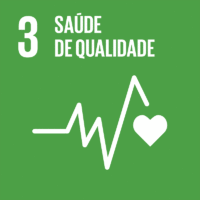Ciência_Iscte
Publicações
Descrição Detalhada da Publicação
Exploring patterns of multiple climates and their effects on safety performance at the department level
Título Revista
Journal of Safety Research
Ano (publicação definitiva)
2020
Língua
Inglês
País
Reino Unido
Mais Informação
Web of Science®
Scopus
Google Scholar
Esta publicação não está indexada no Overton
Abstract/Resumo
Introduction: This paper represents a first attempt to fill a gap in research about different specific climates and safety outcomes, by empirically identifying patterns of climates and exploring the possible effect of different climates at the department level on some specific safety outcomes. The first objective was to explore how different specific climates (safety, communication, diversity and inclusion) can be associated to each other, considering the department level of analysis. The second objective was to examine the relationships between those patterns of climates with safety performance (compliance and participation behaviors). Method: A total of 429 blue-collar workers in 35 departments answered a questionnaire covering safety, diversity, inclusion, and communication climate measures. Cluster analysis was performed to identify clusters of departments with different climate patterns and their impact on safety compliance and safety participation behaviors. Subsequently, a hierarchical multiple linear regression was conducted at the individual-level to test the effect of climate patterns, by controlling for some sociodemographic variables. Results: Results showed the existence of four differentiated clusters of departments. Three of those clusters showed homogenous patterns (coherent association among perceptions of low, medium and high climates) and one heterogeneous (low and medium perceptions). The findings also revealed that the higher the climates perceptions, the higher the levels of safety participation and safety compliance, with safety participation being more affected than compliance. Conclusions: The present research showed the associated effects of some organizational climate factors, such as fair treatment, inclusion, safety and communication within the organization, which had not been previously studied in their combined relationships, on safety behaviors. Practical applications: Several other organizational climate factors, such as fair treatment, inclusiveness and communication, may play an important role in safety, showing the importance of broadening the focus on safety climate as one of the main predictors of safety behaviors.
Agradecimentos/Acknowledgements
--
Palavras-chave
Safety,Diversity,Inclusion,Communication,Climate
Classificação Fields of Science and Technology
- Psicologia - Ciências Sociais
- Economia e Gestão - Ciências Sociais
Contribuições para os Objetivos do Desenvolvimento Sustentável das Nações Unidas
Com o objetivo de aumentar a investigação direcionada para o cumprimento dos Objetivos do Desenvolvimento Sustentável para 2030 das Nações Unidas, é disponibilizada no Ciência_Iscte a possibilidade de associação, quando aplicável, dos artigos científicos aos Objetivos do Desenvolvimento Sustentável. Estes são os Objetivos do Desenvolvimento Sustentável identificados pelo(s) autor(es) para esta publicação. Para uma informação detalhada dos Objetivos do Desenvolvimento Sustentável, clique aqui.

 English
English



